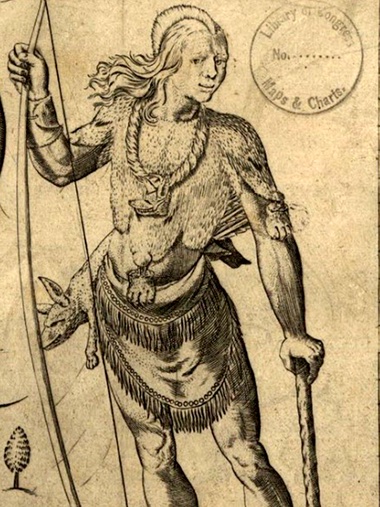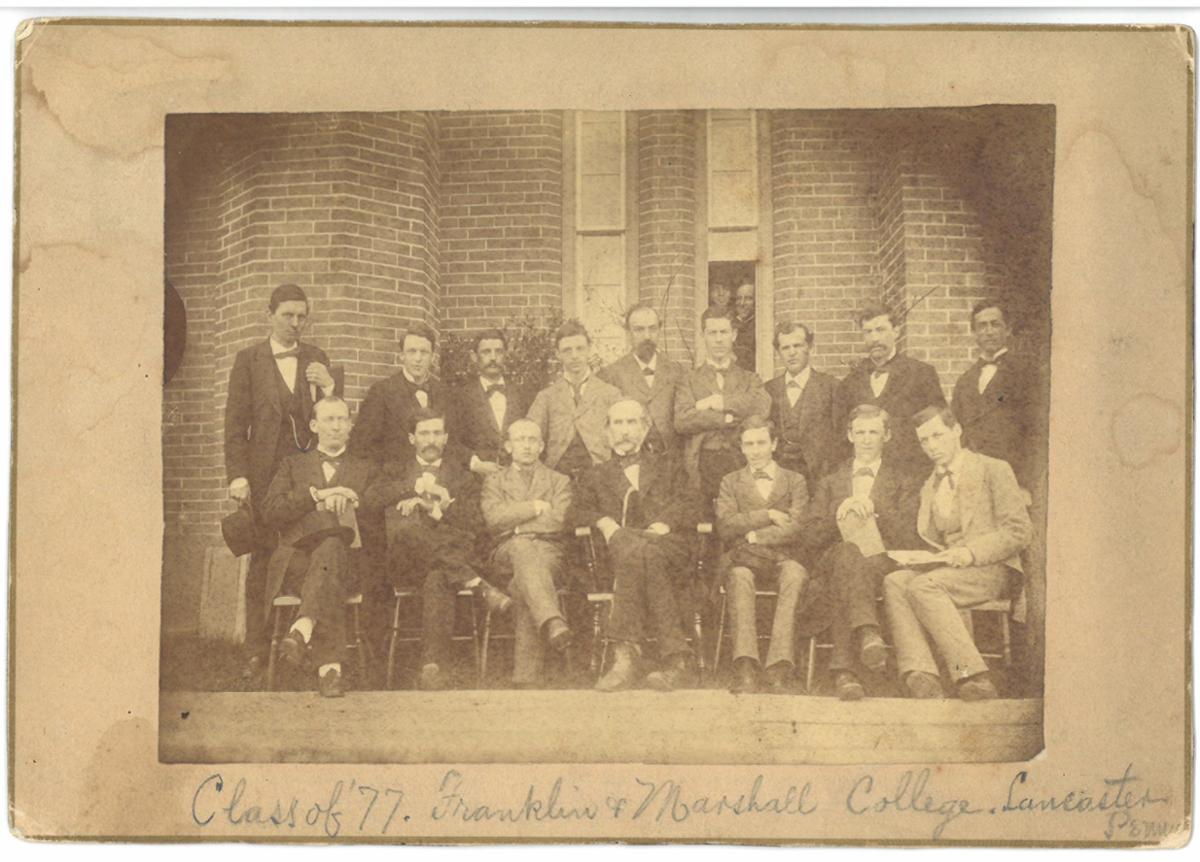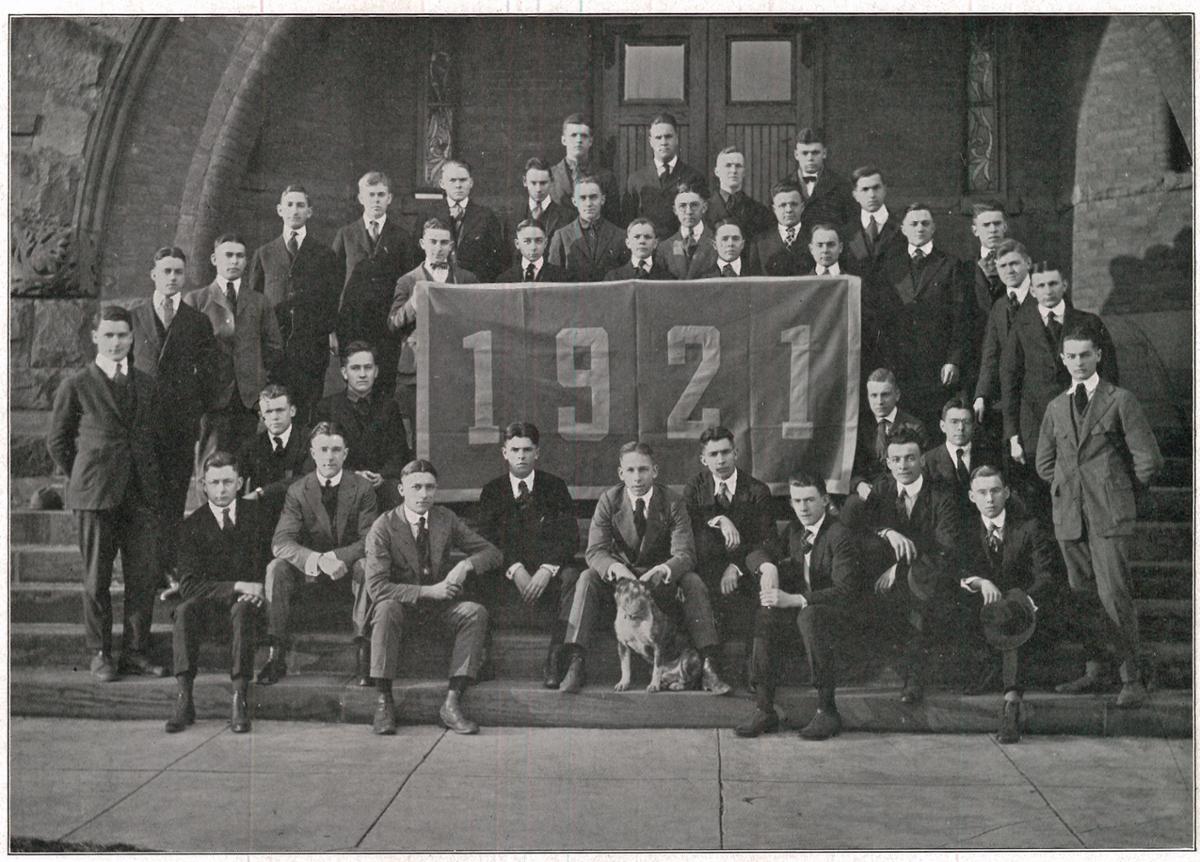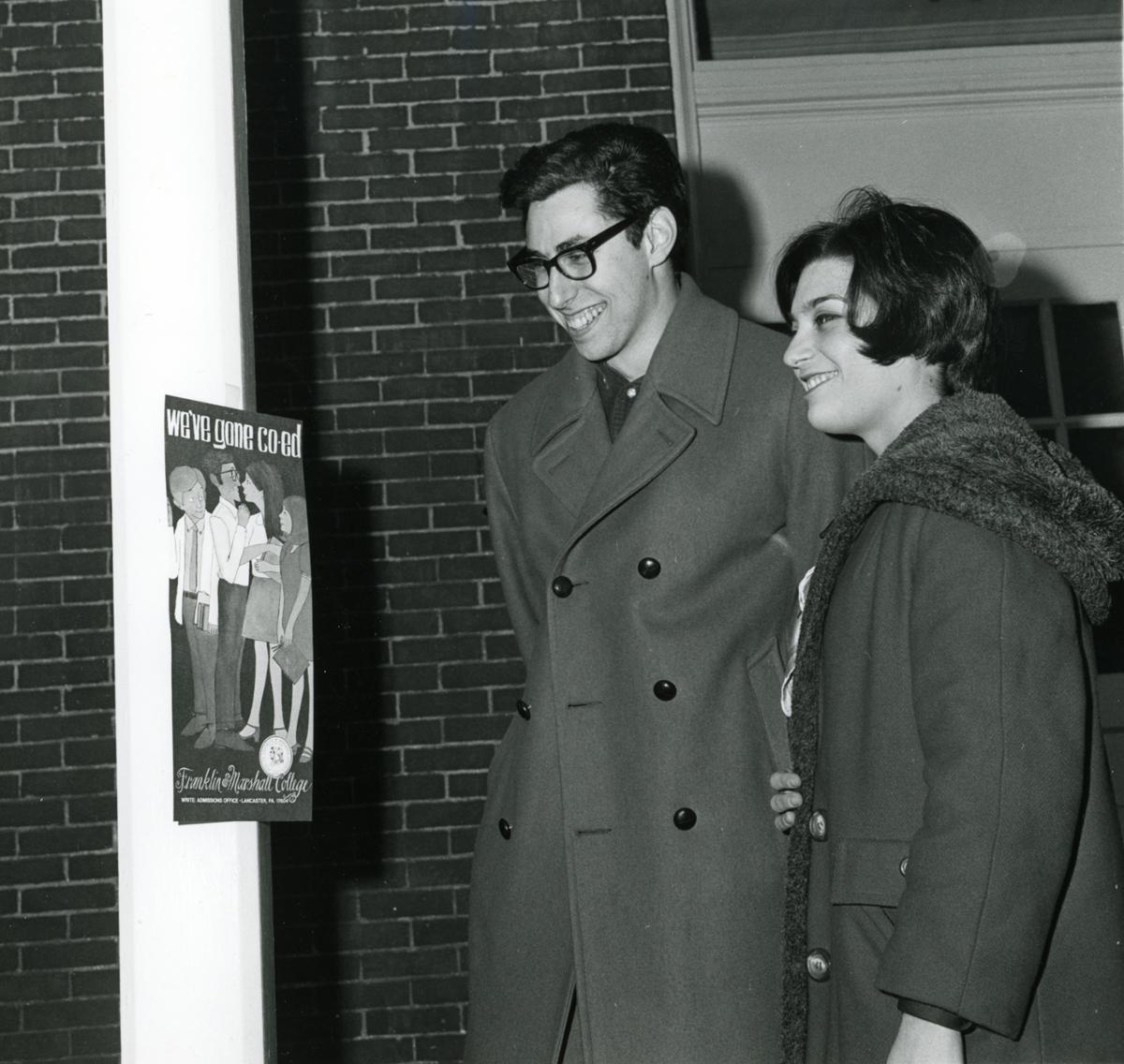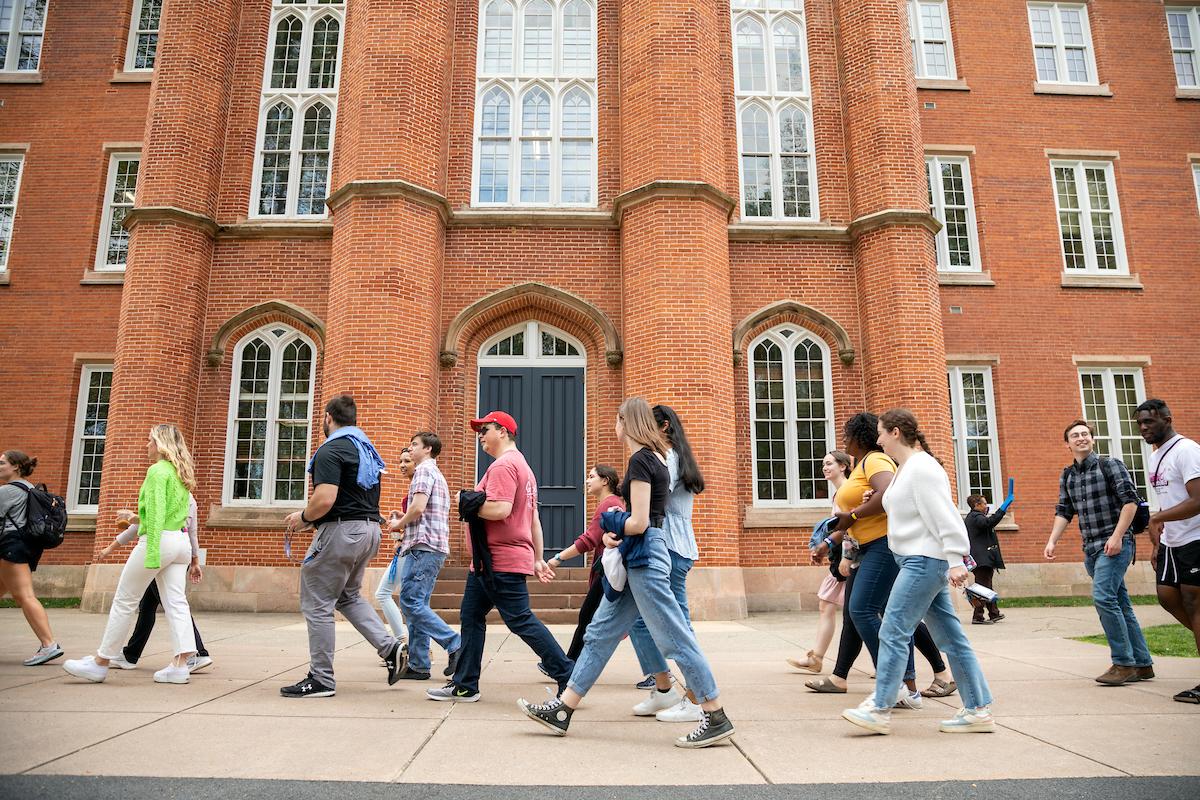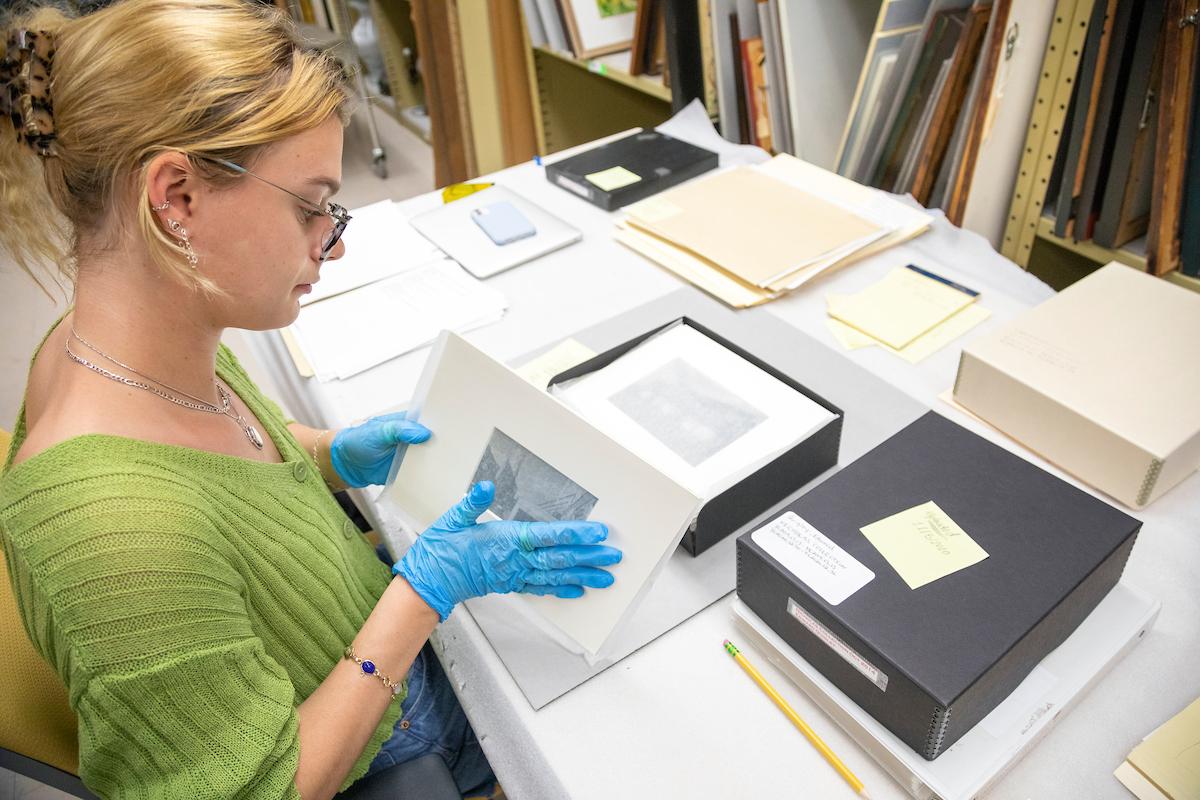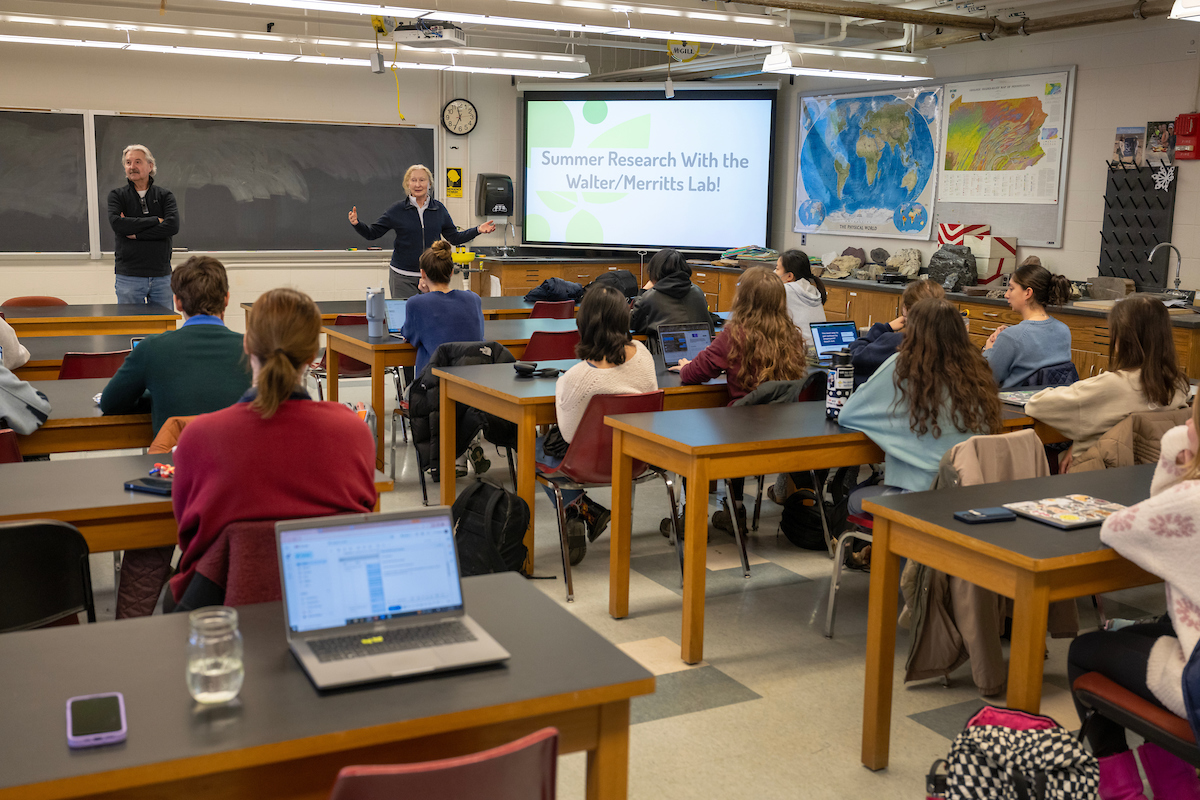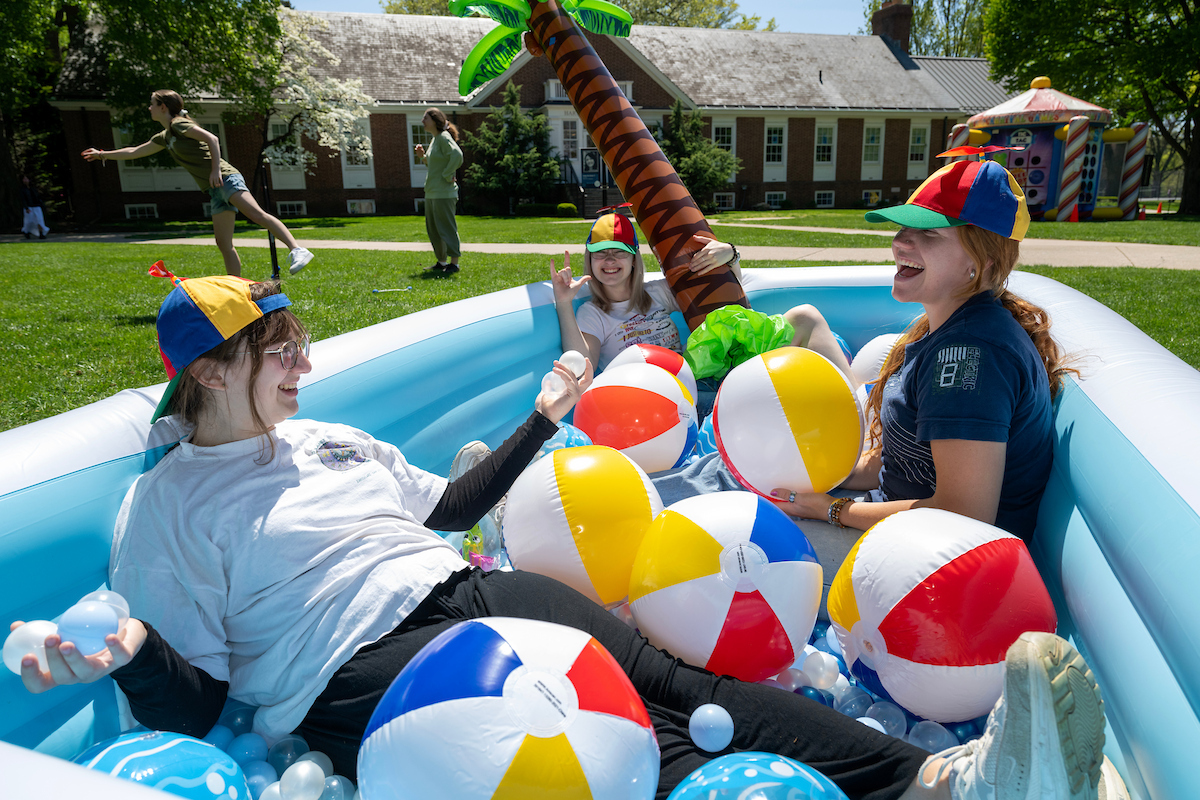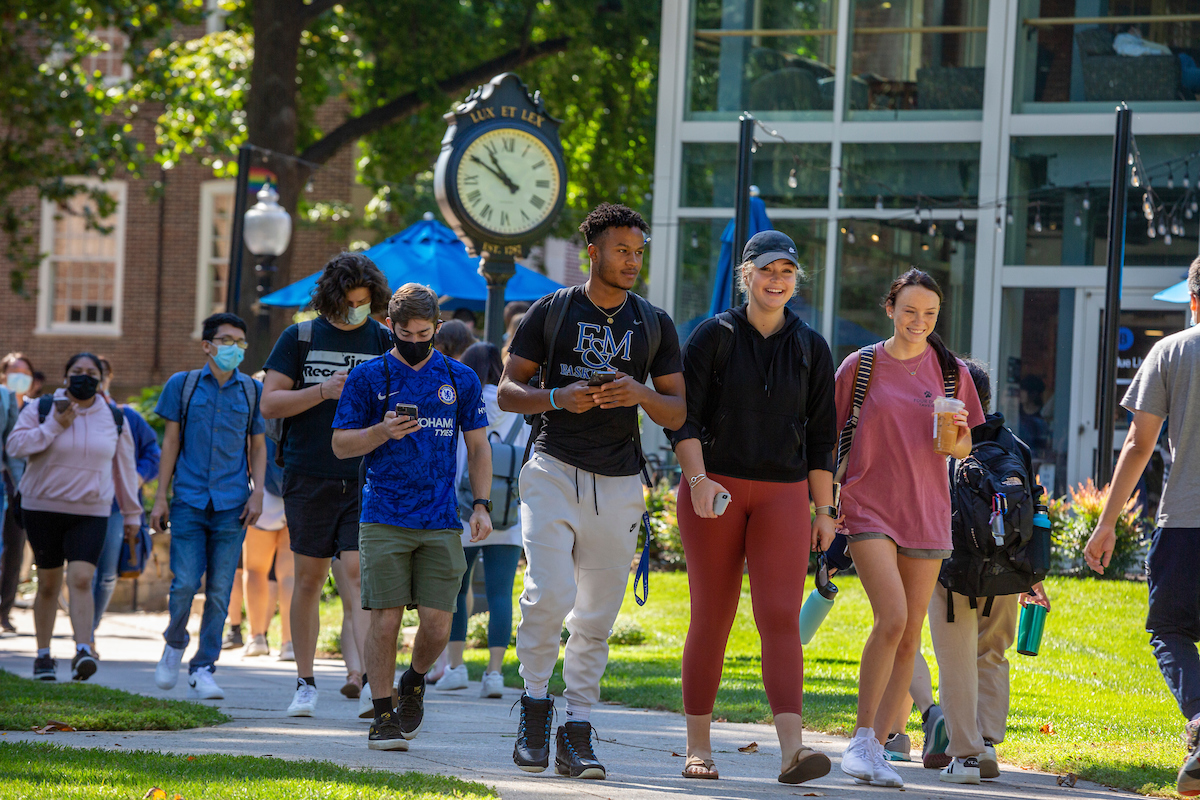Franklin & Marshall College Mission & History
Our Mission
Franklin & Marshall College is a residential college dedicated to excellence in undergraduate liberal education. Its aims are to inspire in young people of high promise and diverse backgrounds a genuine and enduring love for learning, to teach them to read, write, and think critically, to instill in them the capacity for both independent and collaborative action, and to educate them to explore and understand the natural, social and cultural worlds in which they live. In so doing, the College seeks to foster in its students qualities of intellect, creativity, and character, that they may live fulfilling lives and contribute meaningfully to their occupations, their communities, and their world.
Two Colleges
Franklin & Marshall College is one of the oldest institutions of higher learning in the United States. Its roots go back to Franklin College, founded in 1787 with a generous financial contribution from Benjamin Franklin. Classes began on July 16, 1787, with instruction in both English and German, making Franklin College the first bilingual college in the country. It was also the first coeducational institution. Among the first-year students was Richea Gratz, the first Jewish female college student in the United States. However, the coed policy was soon abandoned. Coeducation was not revived at the College for another 182 years.
Marshall College, named after Supreme Court Chief Justice John Marshall, was founded in 1836 in Mercersburg, PA, under the sponsorship of the German Reformed Church. In 1853, Marshall College merged with Franklin College to form Franklin & Marshall College in Lancaster, PA.
20th Century Changes
The 20th century brought rapid change and growth for the college, both in student population and academics. Programs of study expanded into pre-professional training programs that focused on the sciences, health professions, education, and legal studies. Despite the challenges of the Great Depression and World War II, between 1910 and 1980, student enrollment blossomed from a mere 263 to 2072 total students.
The latter half of the century spurred a spirit of activism and youth empowerment on campus influenced by civil rights demonstrations, the women’s liberation movement, the Black Power movement, and the Vietnam War. In 1969, F&M made the decision to expand admission to women, transitioning to a coeducational institution.
Franklin & Marshall Today
Today, Franklin & Marshall College is a residential campus, emphasizing a close-knit community of scholars. In the last ten years, the population of international students has almost doubled and reflects an increasingly diverse student body. F&M currently offers 52 fields of study, and a variety of new certification pathways. With an emphasis on sustainability, F&M is preparing modern students to successfully explore and define the 21st century.
The College is also in the process of critically examining and acknowledging its complex history. Current projects focus on connections to the indigenous land of southeastern Pennsylvania and its peoples, as well as the entanglement of the institution of slavery and the founding of the College.
For more information on College History, explore the resources on the F&M Archives & Special Collections.
Land Acknowledgment Statement
We acknowledge that Franklin & Marshall College exists on land with a long legacy of Native stewardship and cultural interactions. We show respect for the Indigenous peoples of this land by acknowledging their historical and continuing presence and by honoring their legacies. Historically, no sole sovereign controlled the land in the Susquehanna Valley that F&M currently occupies. For many millennia, different Native nations have lived on the land that today is called Lancaster. In the 17th century, the Susquehannock lived in villages here, keeping cultural ties to the Haudenosaunee. By the early 18th century, these lands were a crucible of cultural interaction, as many different Native peoples including but not limited to the Lenape, Sawanwa (Shawnee), Piscataway, Kuskarawaok (Nanticoke), and Onondowagah (Seneca), settled on this land. These Indigenous peoples were displaced as colonial settlers occupied the land and forced them out. The Lancaster Treaty of 1744 was signed here by leaders of the Haudenosaunee (Six Nations), who negotiated an alliance with English colonial officials but, in turn, had to relinquish significant land claims.
On this land, in the Susquehanna Valley, several multinational Native communities existed and thrived. However, a massacre against the Indigenous residents of Conestoga Indian Town by a racist vigilante group known as the Paxton Boys on December 14, 1763, threatened their continuity. The survivors of the massacre were held as prisoners and subsequently murdered at the Lancaster workhouse on December 27. Despite a rich history and the continuing presence of Native communities in our state, neither the federal government nor the Commonwealth of Pennsylvania officially recognizes any Native tribes within Pennsylvania.
We recognize that this land acknowledgment is but a small step in the face of our complicity amidst over two hundred years of settler colonialism and inaction. As a College community, we commit ourselves to continuously educating, raising awareness, and acknowledging the complex legacy of those who came before us on these lands. We welcome all in our community and beyond it to join us in acting collectively to support Native communities.
To learn more about the Native peoples of South Central Pennsylvania, visit our Library resource guide.
Depiction of a Susquehannock man on the Smith Map (1624). Image Credit: Wikimedia
Commons/Library of Congress